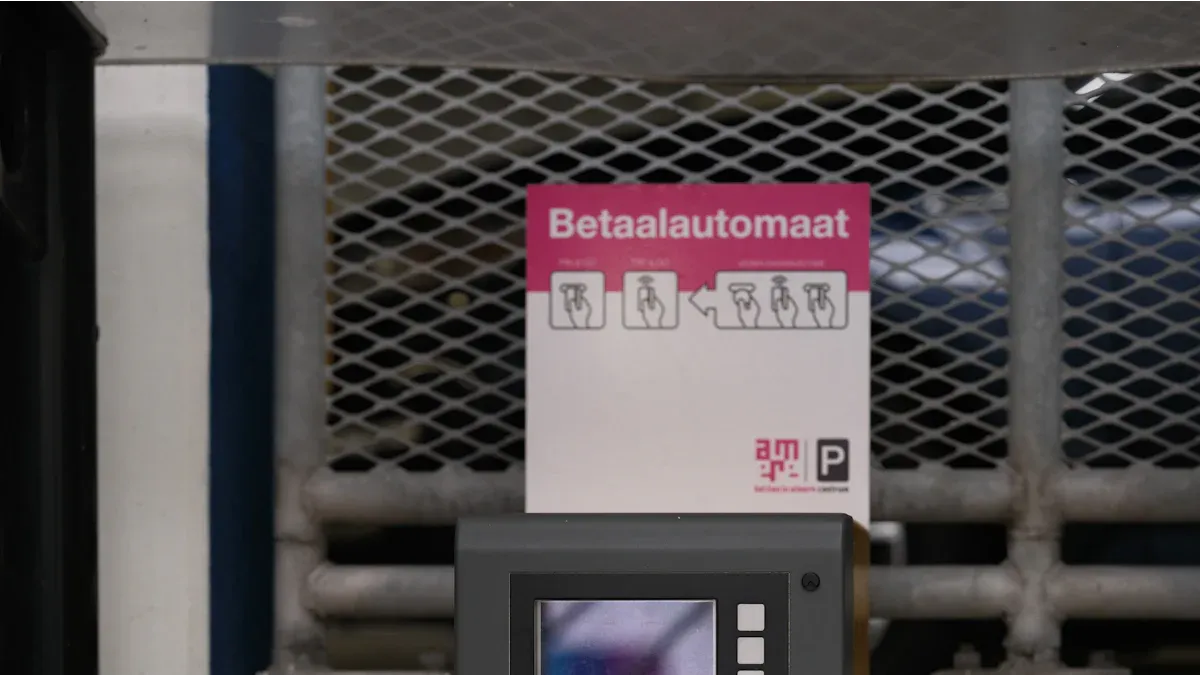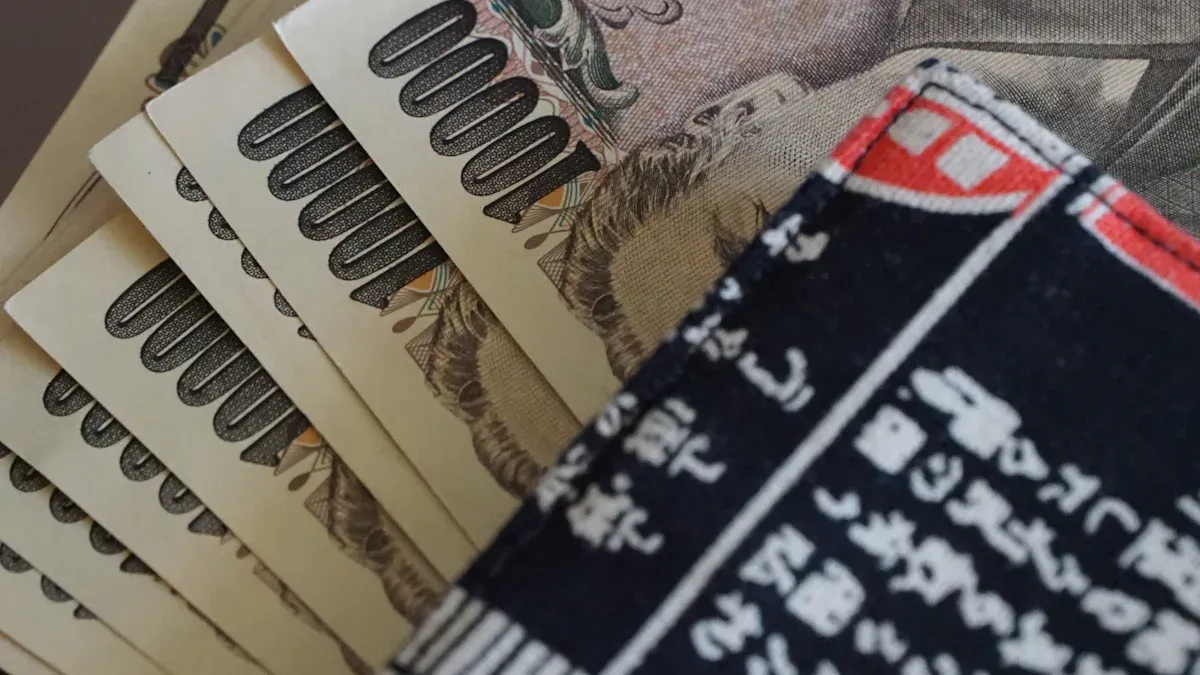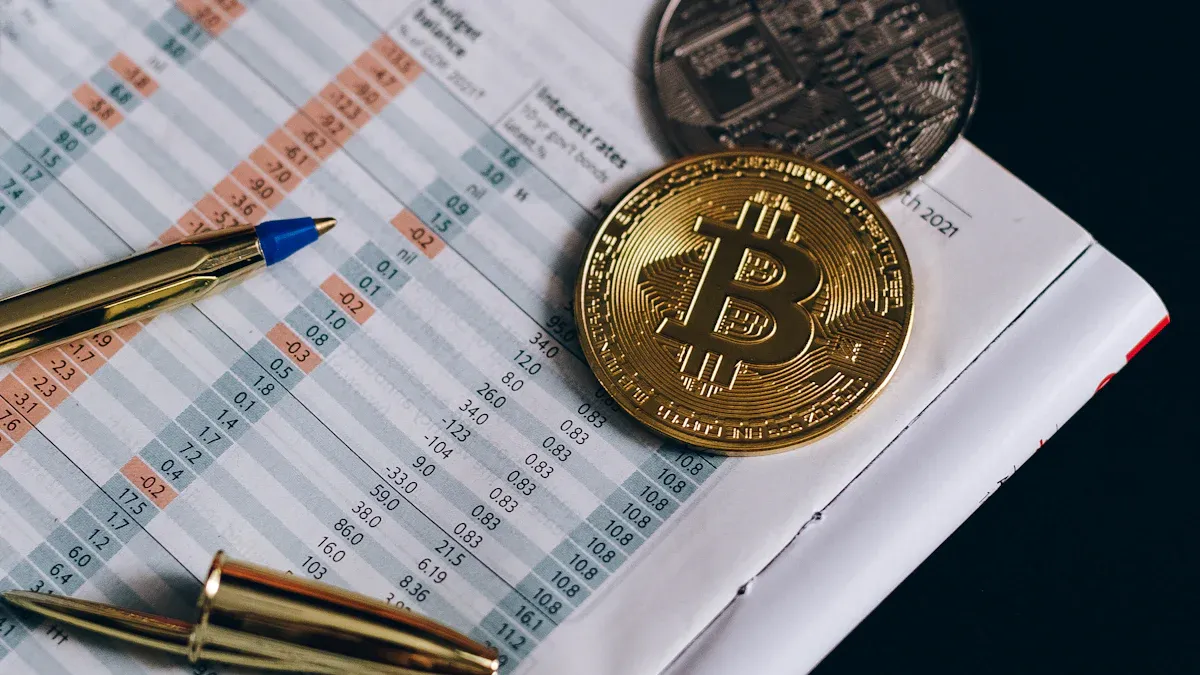- EasyCard
- Trade
- Help
- Announcement
- Academy
- SWIFT Code
- Iban Number
- Referral
- Customer Service
- Blog
- Creator
Unveiling the Truth About Bank Transfers in Japan: 7 Key Points You Must Know Before Remitting

Image Source: pexels
Before you proceed with a Japan bank transfer, you need to pay attention to the following seven key points:
- Fee structures and hidden costs (such as handling fees, exchange rate differences, calculated in USD)
- Required documents, including recipient information and identification
- Online and offline operation processes
- Processing times and influencing factors
- Minimum amounts and transfer frequency limits
- Common pitfalls such as incorrect information and fraud
- Account security and use of official channels
Understanding these points in advance can help you successfully complete cross-border or local transfers.
Key Points
- Understand transfer fees and hidden costs to ensure accurate budgeting and avoid unexpected expenses.
- Prepare recipient information and valid identification to ensure accuracy and avoid transfer delays.
- Choose online or offline transfer methods based on your needs and amount to select the most suitable channel.
- Pay attention to processing times and plan fund arrangements in advance to avoid delays due to holidays or weekends.
- Ensure account security, prioritize official channels, and prevent fraud and information leaks.
Transfer Fees

Image Source: unsplash
When you conduct a Japan bank transfer, the fee structure is the first aspect you need to focus on. Different banks and remittance service providers charge varying fees based on the transfer type. You can refer to the table below for average fees of major banks:
| Transfer Type | Average Fee Range |
|---|---|
| Domestic Transfer | 200 - 500 JPY |
| International Transfer | Up to 7,500 JPY |
Fees can vary significantly depending on the bank you choose. For example:
| Bank Name | Fees (JPY) |
|---|---|
| Shinsei Bank | 2,000 (JPY account), 4,000 (foreign currency account) |
| Rakuten Bank | 750 + 1,000 (intermediary fees) |
| MUFG Bank | 3,000 (online), 7,500 (branch) |
| Seven Bank | 490 (10,000 JPY), 1,950 (100,000 JPY) |
| Western Union | 500 (cash withdrawal), 400 (10,000 JPY), 1,480 (100,000 JPY) |
When budgeting total costs, you cannot focus solely on explicit handling fees. Hidden costs are equally important during the transfer process.
Fee Structure
You need to calculate all fees in advance based on the transfer amount, currency, and channel. For large transfers, some banks may charge additional fees. You can check detailed standards on the bank’s official website or through customer service. It’s recommended to convert all fees to USD for easier comparison across service providers.
Hidden Costs
When conducting a Japan bank transfer, in addition to explicit fees, you should be aware of the following hidden costs:
- The exchange rate is a key factor determining transfer costs, as rate differences directly affect the amount received by the recipient.
- Many banks add a markup to the exchange rate, reducing the actual amount you send.
- Some providers advertise “low fees,” but their exchange rates are less favorable, resulting in less money received.
- For international transfers, intermediary banks may charge additional processing fees, further reducing the received amount.
- Banks and remittance services often do not disclose all fees upfront, so you need to carefully review exchange rates and fee details.
When choosing a service provider, it’s advisable to compare multiple options and prioritize platforms with transparent pricing and real-time exchange rates. This can effectively reduce hidden costs and ensure your funds reach the recipient’s account safely.
Required Documents

Image Source: pexels
When conducting a Japan bank transfer, you need to prepare the necessary documents in advance. The accuracy of these documents directly affects whether the remittance is successful. Many people experience delays or returns due to incomplete or incorrect information. You can review the following details to understand common preparation requirements.
Account Information
When filling out recipient account information, you must ensure every detail is accurate. Typically, you need to provide the recipient bank name, branch, bank address, SWIFT code, account number, recipient name, recipient address, and contact number. For example, a licensed Hong Kong bank requires the following information:
| Information Type | Details |
|---|---|
| Recipient Bank | Licensed Hong Kong Bank |
| Branch | Head Office |
| Bank Address | 8 Finance Street, Central, Hong Kong, Postal Code 999077 |
| SWIFT Code | HKBKHKHHXXX |
| Recipient Account Number | 001-12345678 |
| Recipient Name | e.g., Li Ming |
| Recipient Address | 100 Nathan Road, Tsim Sha Tsui, Kowloon, Hong Kong, Postal Code 999077 |
| Recipient Phone | e.g., 852-1234-5678 |
For foreign currency remittances, you also need to pay attention to the SWIFT code and account number format. Some banks require account numbers to consist of two parts separated by a hyphen. Incorrect information can lead to delays or returns.
Tip: You can verify recipient information in advance to avoid delays due to spelling errors or missing numbers.
Identification Requirements
When processing a bank transfer, banks typically require valid identification. Common documents include a residence card, passport, proof of address, personal seal or signature, and a Japanese phone number. If you are a mainland China resident, some banks may also require your My Number or proof of employment. Below are common document types:
- Residence card
- Passport
- Proof of address (utility bill)
- My Number
- Proof of employment
When submitting documents, it’s advisable to prepare both originals and copies in advance. Banks will verify the information to confirm your identity. Incomplete or inconsistent documents may delay the transfer review process.
Reminder: When filling out documents, ensure all information is consistent to avoid transfer failures due to discrepancies between documents and account details.
Japan Bank Transfer Process
Online Process
You can complete a Japan bank transfer online. Most banks offer online banking or mobile app services. You need to log into your account and navigate to the remittance page. The system will prompt you to enter recipient information, including bank name, branch, SWIFT code, account number, and recipient address. You also need to input the transfer amount and select the currency.
When filling out the form, you must carefully verify each item. The system typically detects format errors, but spelling mistakes or missing numbers can still cause transfer failures. You can refer to the bank’s sample forms to ensure accuracy.
The advantage of the online process is its convenience, supporting 24-hour application submissions. You can check the transfer status anytime. Some banks also support real-time currency conversion, allowing you to know the received amount in advance.
Tip: Before submitting, you can preview all information to confirm accuracy, reducing delays due to errors.
Offline Process
You can also handle a Japan bank transfer offline. You need to visit a bank branch and fill out a paper remittance application form. Staff will assist in verifying recipient information and identification documents. You should prepare originals of your passport, residence card, proof of address, and other documents.
The offline process is suitable for large or special remittance needs. The bank will review documents on-site to ensure identity and account information match. You can inquire about fee structures and processing times in person.
Different banks have varying processes for foreign currency transfers. For example, when transferring from abroad to a Japanese bank account, fees typically range from USD 27.37 to USD 36.49. Choosing Shinsei Bank can avoid receiving fees, while SMBC Bank and Japan Post Bank have lower fees, around USD 9.12 to USD 13.68.
You can refer to the table below to understand the main differences between bank transfers and international remittance services:
| Bank Transfer Process | International Remittance Service Process | |
|---|---|---|
| Fee Types | Remittance fee, intermediary fee, receiving fee, forex fee (possible additional fees) | Remittance fee and forex fee (possible additional fees) |
| Time | Approximately 5 to 7 business days | Approximately 1 to 2 business days |
When choosing a bank and remittance channel, you can make informed decisions based on fees and processing times. Understanding process details in advance helps ensure a smooth Japan bank transfer.
Processing Times
Timing Factors
When handling a Japan bank transfer, processing times vary due to multiple factors. Generally, local transfers are completed on the same day or the next day, while international transfers take longer, averaging 1 to 7 business days. You need to note the following:
- Business day transfers are processed faster, with funds typically transferred on the same or next business day.
- If you initiate a transfer on weekends or public holidays, banks will delay processing until the first business day after the holiday. For example, during Golden Week or other long holidays, delays may exceed one day.
- Large transfers may require additional reviews, as banks verify the source and purpose of funds, which can extend processing times.
- Some banks charge higher fees for weekend transfers, with fees up to USD 1.50 (approx. ¥220).
Reminder: When initiating transfers during holidays or weekends, plan fund arrangements in advance to avoid delays affecting the recipient’s use.
Progress Tracking
After completing a Japan bank transfer, you can track progress through various methods. Most banks offer online banking and mobile apps, allowing you to log in and check transfer status anytime. Some banks also send SMS or email notifications when funds are received.
If you notice unusual delays, you can contact bank customer service to check the transfer progress. The bank will assist in tracking fund movements based on your transfer reference number and recipient information. You can also save the transfer receipt for future follow-ups.
For international transfers, pay attention to the bank’s processing cycles and holiday schedules. Banks process all transfer requests received during holidays in sequence after the holiday ends.
Tip: Checking progress promptly after a transfer helps you detect issues early, ensuring fund safety.
Amount Limits
Minimum Amount
When handling a Japan bank transfer, you must first understand minimum amount requirements. Most banks set a minimum transfer amount, typically 1 USD or equivalent in JPY. Some banks have higher minimums for foreign currency transfers, so it’s advisable to consult bank customer service to confirm specific standards.
If you use a licensed Hong Kong bank for international transfers, the minimum amount is generally 10 USD. When filling out the transfer application, the system will prompt whether the amount meets the minimum requirement. If below the standard, the bank will reject the request, avoiding unnecessary fee losses.
Frequency Controls
You also need to be aware of limits on single, daily, monthly, and annual cumulative transfer amounts. Most banks impose strict controls on transfer frequency and totals to prevent money laundering and financial risks. The table below shows common amount limits:
| Period | Maximum Transfer Amount (USD Equivalent) |
|---|---|
| Single, Daily, or Monthly | Approx. 7,000 USD |
| Annual | Approx. 21,000 USD |
When planning large transfers, you must communicate with the bank in advance. The bank will require you to provide proof of fund source and transfer purpose. Common documents include:
| Document Category | Specific Requirements |
|---|---|
| Fund Source | Photos of bank statements from the last six months, photos of bank passbook pages with account holder information |
| Transfer Purpose | Documents proving the purpose of the transfer (e.g., deposits, loan contracts) |
You can also prepare the following documents for review:
- Latest tax deduction slip or payslip
- Employment contract from the last three months
- Latest tax certificate
- Contracts or investment proofs verifying the transfer purpose
Reminder: For large transfer applications, the more complete your documents, the smoother the review process. Banks may request additional documents to ensure fund compliance.
When operating, you must comply with the bank’s amount and frequency regulations. Excessive or frequent transfers may trigger risk controls, leading to account freezes or delayed processing. Planning fund movements in advance ensures smoother and safer Japan bank transfers.
Common Pitfalls
Information Errors
When handling a Japan bank transfer, incorrect information is one of the most common risks. Many people experience delays or returns due to carelessness. Common errors include:
- Failing to verify recipient information, where incorrect account numbers or names lead to transaction failures.
- Not comparing exchange rates, where small rate differences can significantly reduce the received amount.
- Overlooking transfer fees, as some providers may charge hidden fees.
- Choosing banks over specialized transfer services, which may delay international payments.
You can take the following measures to avoid these errors:
When filling out recipient information, verify each item carefully, especially account numbers and names.
Before submitting, double-check all information to ensure accuracy.
Compare exchange rates and fees from multiple providers to choose the most suitable platform.
Save transfer receipts for future reference.
Fraudulent Notifications
Scammers often exploit the Japan bank transfer process for fraud. They may pose as bank staff or lure you through fake websites. Common scam tactics include:
- Scammers impersonating banks to steal your funds or personal information.
- Fake websites soliciting investments, unrelated to banks.
- Using foreign-owned bank accounts for fraud, tricking you into transferring funds to illegal accounts.
- Inducing you to transfer funds to accounts purchased on the black market, involving significant amounts.
You can protect yourself with these methods:
- If you receive unfamiliar calls about money, consult the police, ward office, or family immediately.
- Do not call phone numbers on fake warning screens or download software requested by strangers.
- Never disclose your account information, ID, or password to anyone.
- Bank counters and ATMs display warning signs, so pay attention to these alerts.
- If a stranger requests a transfer, it’s likely a scam, so avoid acting rashly.
In suspicious situations, stay calm and promptly seek help from the bank or police to prevent financial losses.
Safety Tips
Account Protection
When conducting a Japan bank transfer, protecting account security is critical. Japanese banks use multiple technologies to safeguard your funds and personal information. You can follow these measures:
- Banks use encryption to protect all online transactions, ensuring data isn’t stolen during transmission.
- For large transfers, banks require multi-factor authentication, such as SMS codes, one-time password generators, or biometrics.
- Some banks offer “furikomi” services, allowing transfers without exposing personal information, reducing leak risks.
- The Financial Services Agency (FSA) strictly regulates all financial institutions to prevent fraud and money laundering.
You can also enhance account security with these latest technologies:
| Security Measure | Details |
|---|---|
| eKYC Verification | Online comparison of smart card and registered facial data to ensure identity authenticity. |
| FIDO Authentication App | Important transactions require authentication apps and one-time password devices for added security. |
| Antivirus Software | Banks distribute PhishWall Premium for free to detect and prevent fraudulent fund transfers. |
| Vulnerability Response | Banks collect daily cyber threat data and conduct penetration tests to strengthen defenses. |
| Fraud Transaction Monitoring | Real-time monitoring of online banking systems to prevent unauthorized access and fund losses. |
Reminder: When setting account passwords, use complex combinations and change them regularly. Never share passwords or verification codes. Contact bank customer service immediately for unusual transactions.
Official Channels
When handling a Japan bank transfer, always choose official channels. Banks and the Financial Services Agency continuously strengthen oversight of illegal transfers and account security. You can ensure fund safety with these methods:
- Banks block transfers where the sender’s name doesn’t match the account name, preventing funds from flowing to illegal crypto asset services.
- Financial institutions develop authentication technologies to ensure only authorized individuals can withdraw from ATMs, preventing misuse of forged or stolen cards.
- Information systems detect abnormal transactions in real time, issuing timely warnings to reduce loss risks.
- Eight banks collaborate with the National Police Agency to share suspicious account information in real time, combating special fraud schemes.
- Japan’s main anti-money laundering law requires banks to conduct customer due diligence and report suspicious transactions to the Japan Financial Intelligence Center (JAFIC) immediately.
| Regulatory Body | Main Responsibilities |
|---|---|
| FSA | Regulates financial institutions to prevent fraud and money laundering |
| JAFIC | Receives suspicious transaction reports and analyzes fund flows |
Tip: Prioritize bank websites, official apps, or branch services for transfers. Avoid third-party or unfamiliar websites. Consult banks or regulators promptly in suspicious situations.
When handling a Japan bank transfer, understanding these seven key points is crucial. You need to prepare all documents, verify information carefully, monitor amount limits and processing times, prioritize account security, and use official channels. Only then can you effectively mitigate risks and complete remittances smoothly.
FAQ
Can Japan bank transfers arrive instantly?
When conducting a Japan bank transfer, real-time arrival is typically not possible. Local transfers may arrive on the same day, while international transfers generally take 1 to 7 business days. You need to plan fund arrangements in advance.
Can I transfer directly from a mainland China account to a Japanese bank?
You can transfer funds from a mainland China account to a Japanese bank account through a licensed Hong Kong bank or international remittance service. You need to prepare complete recipient information and relevant documents.
Will funds be automatically refunded if a transfer fails?
If a transfer fails, the bank will refund the funds to the original account. You need to wait patiently, typically 3 to 7 business days. You can contact bank customer service to check progress.
Are foreign currency options available for Japan bank transfers?
You can choose multiple foreign currencies for transfers. Pay attention to exchange rates and fees. Some banks support major currencies like USD and EUR. Consult bank customer service before proceeding.
What should I do if I enter incorrect information during a transfer?
If you enter incorrect information, the bank may reject the transfer or return the funds. Contact bank customer service immediately, provide correct information, and assist the bank in resolving the issue promptly.
You’ve successfully covered the seven key considerations for bank transfers in Japan, including complex fee structures, strict documentation requirements, transfer timelines, and account security. You now understand that for both local and international remittances, you might face hidden exchange rate losses, high intermediary bank fees, and lengthy transfer times. These factors not only increase your costs but also restrict the flexibility of your fund allocation.
In the rapidly changing global financial market, you need a FinTech platform that can bypass traditional banking barriers, offer real-time exchange rates, and ensure same-day fund arrival to solve the pain points of conventional Japanese bank transfers.
BiyaPay is the ideal solution for your efficient and low-cost cross-border fund management. We offer real-time exchange rate inquiry and conversion for fiat currencies, with remittance fees as low as 0.5%, and zero commission for contract limit orders, helping you maximize cost control and avoid the complex fee traps of traditional banks. With BiyaPay, you can seamlessly convert between various fiat and digital currencies and trade global markets, including Stocks, all on one platform. There is no need for a complex overseas bank account, and you can enjoy same-day fund remittance and arrival. Click the Real-time Exchange Rate Inquiry now, and BiyaPay for quick registration, and use peak capital efficiency and transparent fees to make your cross-border transfers limitless!
*This article is provided for general information purposes and does not constitute legal, tax or other professional advice from BiyaPay or its subsidiaries and its affiliates, and it is not intended as a substitute for obtaining advice from a financial advisor or any other professional.
We make no representations, warranties or warranties, express or implied, as to the accuracy, completeness or timeliness of the contents of this publication.




Contact Us
Company and Team
BiyaPay Products
Customer Services
is a broker-dealer registered with the U.S. Securities and Exchange Commission (SEC) (No.: 802-127417), member of the Financial Industry Regulatory Authority (FINRA) (CRD: 325027), member of the Securities Investor Protection Corporation (SIPC), and regulated by FINRA and SEC.
registered with the US Financial Crimes Enforcement Network (FinCEN), as a Money Services Business (MSB), registration number: 31000218637349, and regulated by FinCEN.
registered as Financial Service Provider (FSP number: FSP1007221) in New Zealand, and is a member of the Financial Dispute Resolution Scheme, a New Zealand independent dispute resolution service provider.



















